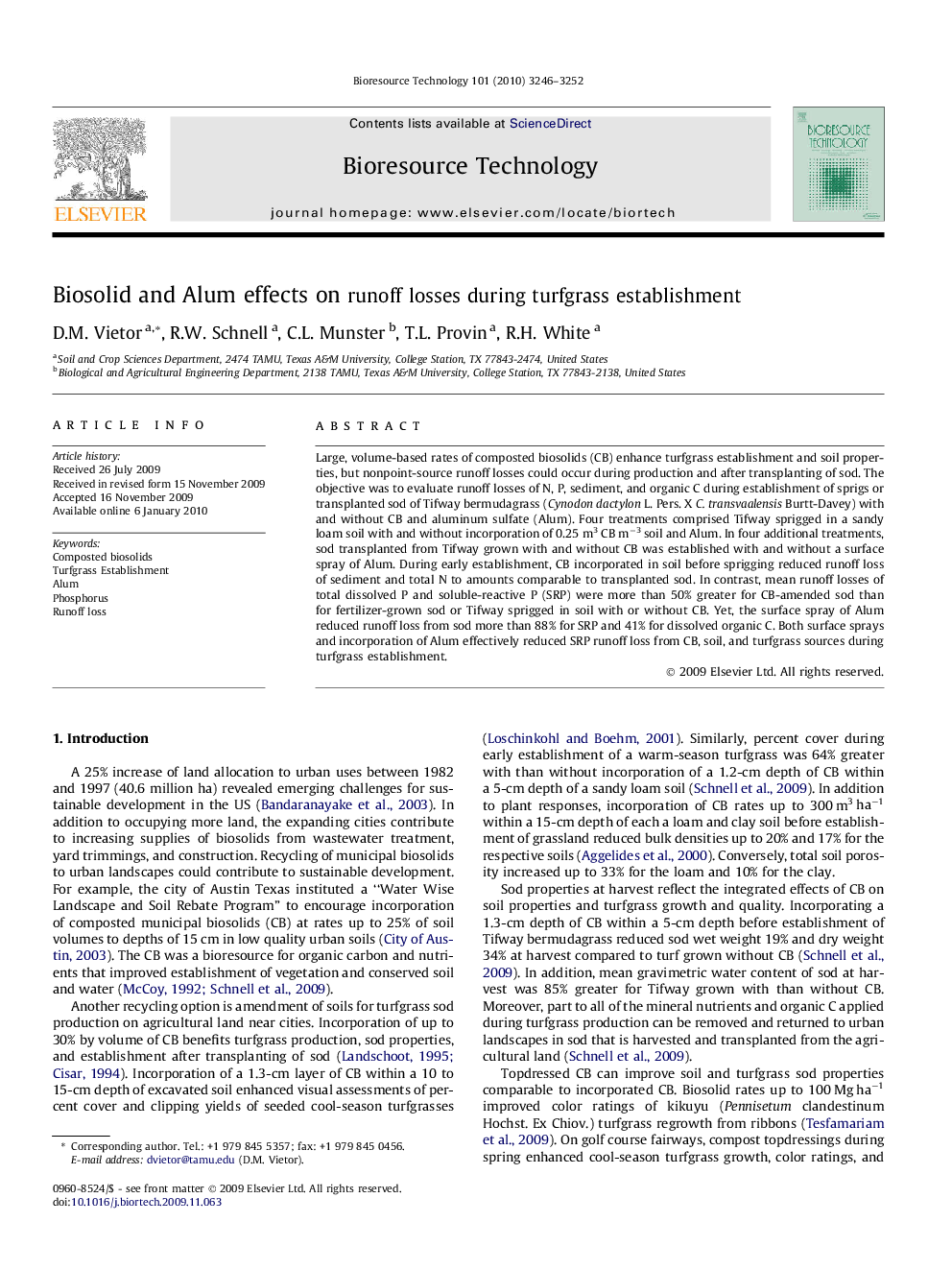| Article ID | Journal | Published Year | Pages | File Type |
|---|---|---|---|---|
| 683673 | Bioresource Technology | 2010 | 7 Pages |
Large, volume-based rates of composted biosolids (CB) enhance turfgrass establishment and soil properties, but nonpoint-source runoff losses could occur during production and after transplanting of sod. The objective was to evaluate runoff losses of N, P, sediment, and organic C during establishment of sprigs or transplanted sod of Tifway bermudagrass (Cynodon dactylon L. Pers. X C. transvaalensis Burtt-Davey) with and without CB and aluminum sulfate (Alum). Four treatments comprised Tifway sprigged in a sandy loam soil with and without incorporation of 0.25 m3 CB m−3 soil and Alum. In four additional treatments, sod transplanted from Tifway grown with and without CB was established with and without a surface spray of Alum. During early establishment, CB incorporated in soil before sprigging reduced runoff loss of sediment and total N to amounts comparable to transplanted sod. In contrast, mean runoff losses of total dissolved P and soluble-reactive P (SRP) were more than 50% greater for CB-amended sod than for fertilizer-grown sod or Tifway sprigged in soil with or without CB. Yet, the surface spray of Alum reduced runoff loss from sod more than 88% for SRP and 41% for dissolved organic C. Both surface sprays and incorporation of Alum effectively reduced SRP runoff loss from CB, soil, and turfgrass sources during turfgrass establishment.
